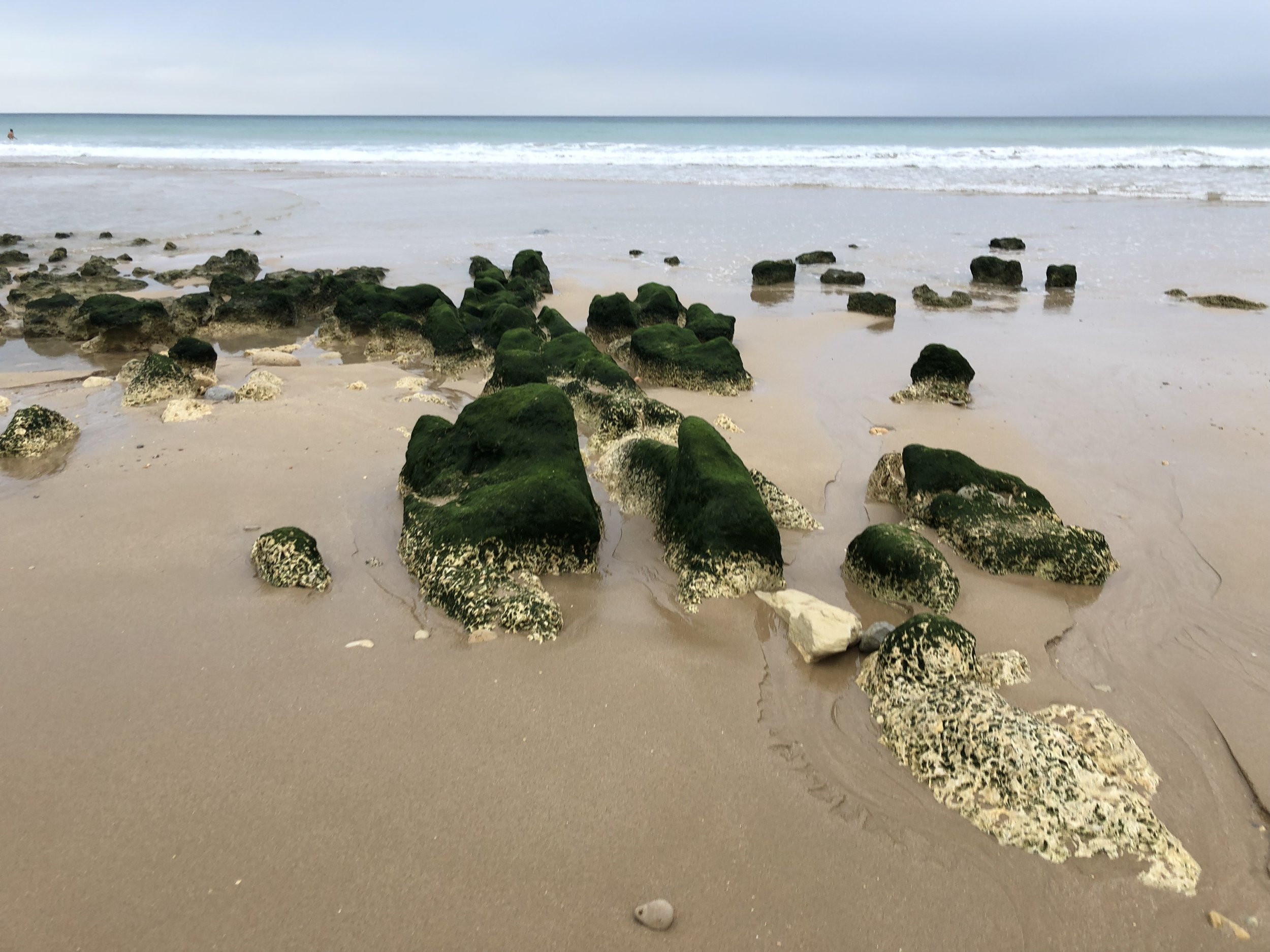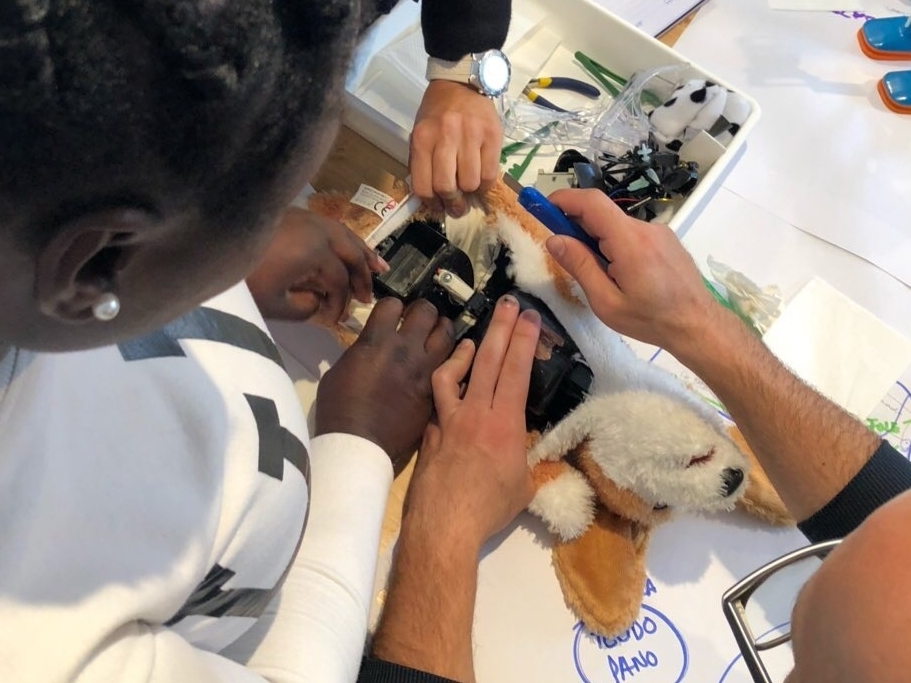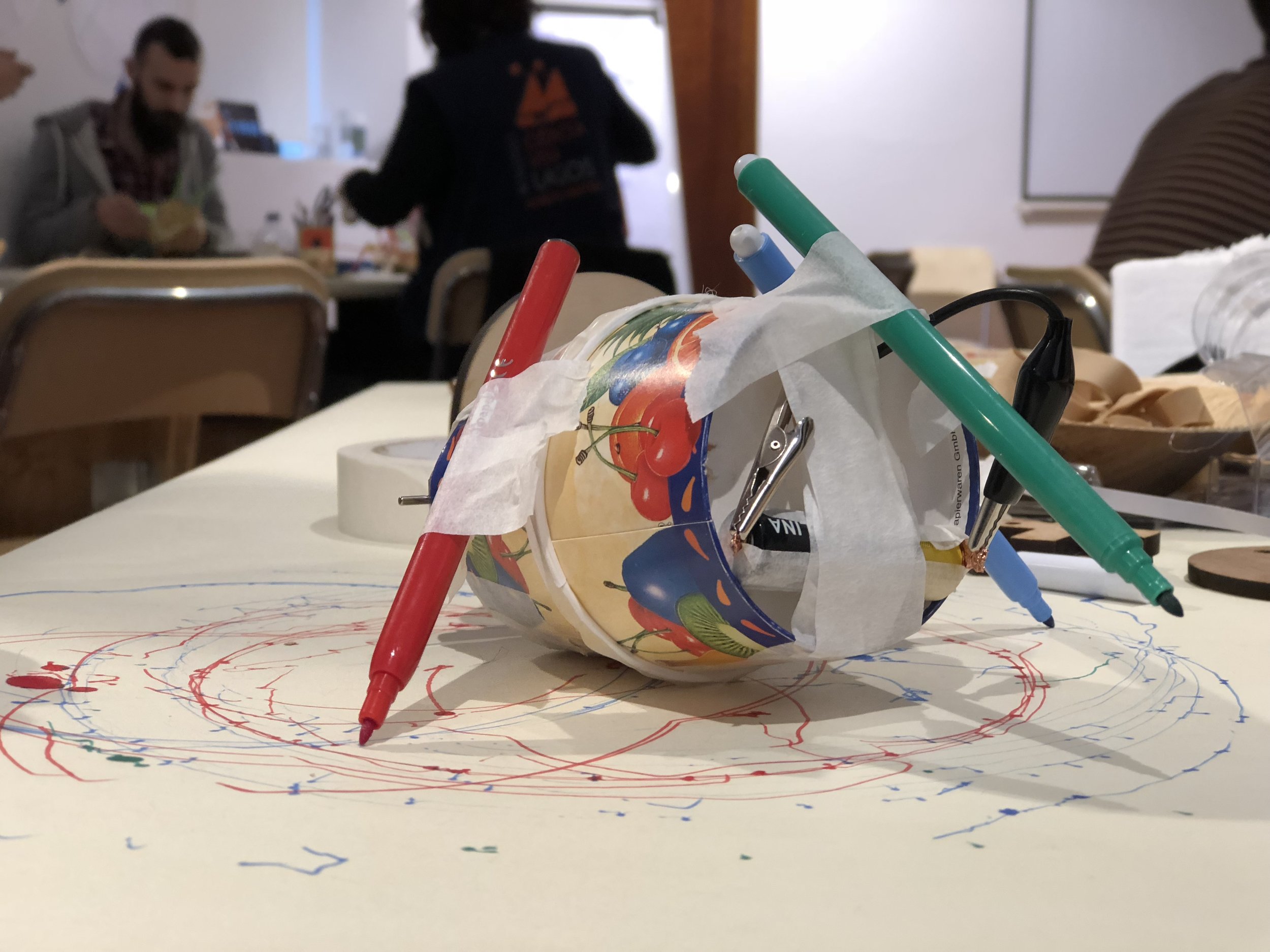Workshop at Ciencia Viva Lagos
In the first blog post about my European tinkering adventure this spring I wrote about talks, workshops and residencies in the northern countries of Denmark and Sweden. After a great time with LEGO and Strawbees, I flew south to Portugal and Spain for a couple more weeks of playful learning.
The second leg of the trip started with a public talk and two day professional workshop at the Ciencia Viva Science Center in Lagos, Portugal.
This small but passionate science center has been experimenting with making and tinkering for a few years and their team has developed a workderful permanent makerspace with flexible furniture and tons of awesome tools and materials.
The workshop was made up of educators and designers from science centers all over portugal. We started off with dissection activity where people worked in pairs to imagine what was inside a singing and dancing toy, drew their ideas on a large sheet of paper and then opened up the device to see what was inside.
In the afternoon, we transitioned into working on a giant collaborative chain reaction machine. I think that the toy dissection was a good introduction to the activity as it got participants in the mindset to make close observations and work with a partner.
It was fun to see how a material (for example a wooden top) sparked deep challenges and investigations. This group spent a long time trying to figure out how to make the top spin automatically after a weight fell off the table.
In the workshop iteration of the chain reaction, we often allow the last group to create their own version of a finale. The team at the end of the machine didn't disappoint with a awesome ping pong ball launcher mechanism that dropped balls into a flipping spatula that flung them across the room!
We spent over three hours building the machine and the energy in the room was really fun and focused on the task at hand.
The day ended on an unexpected note as a stalled car that made it up the cobblestone streets to the science center parking lot. We needed to demonstrate our collaborative attitude honed through tinkering activities. Luckily the car made it out quickly because I think after the toy take apart activity, some of the participants were ready to move on to a more ambitious dissection.
The next morning we started with art machines and it was amazing to see the creations that participants made using the DAGU motors and laster cut hubs! I really love doing art machines workshops with these affordable elements that allow for ambitious designs.
And finally for the last activity, we tried a new experiment of building paper circuits and then programming them with the Chibitronics chibichip. We started with some examples that inspired groups to work in pairs to build simple designs using batteries, copper tape and gumdrop LEDs.
The groups then connected their creations to the chibichip and started experimenting with both the text based and block based programming.
I liked the format of the workshop that allowed for lots of free choice and let each group go at their own pace yet still pushed people to go a bit beyond what they were comfortable with.
It was really great to spend time with the group from the Ciencia Viva network. They are already doing some great experiments with making/tinkering and community outreach and I'm excited to see where the future experiments lead!
In the next and final post about this European adventure, I will share about the last stop in Barcelona where I participated in the inspiring STEAMconf.

















